Water Rhythm Jiangsu, a Red Journey| For an unforgettable remembrance
The water charm of Jiangsu not only has the beautiful waves of Nanjing's Qinhuai River, the elegance of Yangzhou, but also has a number of red scenic spots full of meaning. This year marks the centenary of the founding of the Party; we come to the scenery engraved with the mark of time, walk into history, look back on the past, walk into the picturesque water Jiangsu, and go deeper into the eventful years of turmoil.
Nanjing, the ancient capital of the Six Dynasties in the shade of sycamore trees, and the capital of the ten dynasties in the customs of the years. The Qinhuai River is rippling with beautiful golden waves, the Meiling Palace hides warm necklaces, and the French sycamore trees on Yihe Road have experienced many spring, summer, autumn and winter.
Her appearance is ever-changing, and her charm is unique for thousands of years. It is the grandeur that swallows mountains and rivers, the elegance of a clear voice and a quiet charm, the majesty of a tiger and a dragon, and the tolerance that coexist in ancient and modern times. She has four distinct seasons and rotates beautiful scenery.
Our "Water Rhythm Jiangsu, Red Journey" starts here to appreciate the infinite charm of this ancient capital!
With the Confucius Temple as the core, the ten-mile Qinhuai River as the axis, and the Ming City Wall as the link, many historical and cultural attractions are connected, making it a gathering place for Nanjing's history and culture.

The Qinhuai River is Nanjing's mother river. It has been romantic since ancient China to this day. It is very famous in history. It has always been "the smoky and moon area of the Six Dynasties, where gold powder gathers" and a prosperous place for the ten generations."The clothes and cultural relics are abundant in the south of the Yangtze River; The literary talent is romantic, and it is best in the sea." It is known as "China's first historical and cultural river."

We walked onto Wenyuan Bridge and listened to the tour guide explain the interesting history of the Qinhuai River. On both sides of the Qinhuai River, on one side is a place where gold powder is romantic, and on the other side is Jiangnan Gongyuan, the main examination room for the Southern Examination. Therefore, in history, there is a saying that "gentlemen cannot cross bridges".

The famous Jiangnan Gongyuan was the largest imperial examination room in ancient China. From here, many people who were baptized by the imperial examination and later achieved certain achievements have come out. There is also a Chinese Imperial Examination Museum that can be visited together with Jiangnan Gongyuan. This time I didn't go in and visit, but I felt majestic and solemn just visiting outside.

"A beautiful place in Jiangnan, an imperial state in Jinling." As Nanjing's "Mother River", the Qinhuai River has endless scenery on both sides. The ten-mile-long water area from the Middle East Water Pass to the Shuixi Gate is also known as the "Ten Miles Qinhuai" and has always been the most prosperous area in Nanjing.


Confucius Temple, there are many tourists along the Qinhuai River. There are also rows of shops on both sides, including salted duck, osmanthus cake, roast duck sausage, stinky tofu, etc. In addition to Nanjing's specialty snacks, most of the food streets in China can be seen here. There are also many shops that rent and sell Hanfu. Beautiful young ladies wear Hanfu walking along the Qinhuai River, making it pleasing to the eye.



The decoration of the small gift shops is also very distinctive. There are also souvenir shops, which contain many Jinling specialties, including Yuhua stones, tea leaves, salted ducks, and cakes. There are some very distinctive and exquisitely made gadgets, refrigerator stickers, pencil bags, fans, all kinds of small gifts with characters, especially the cartoon version of Qinhuai Bayan and other small gifts. They are very cute, but the prices are also a little more expensive than other places.
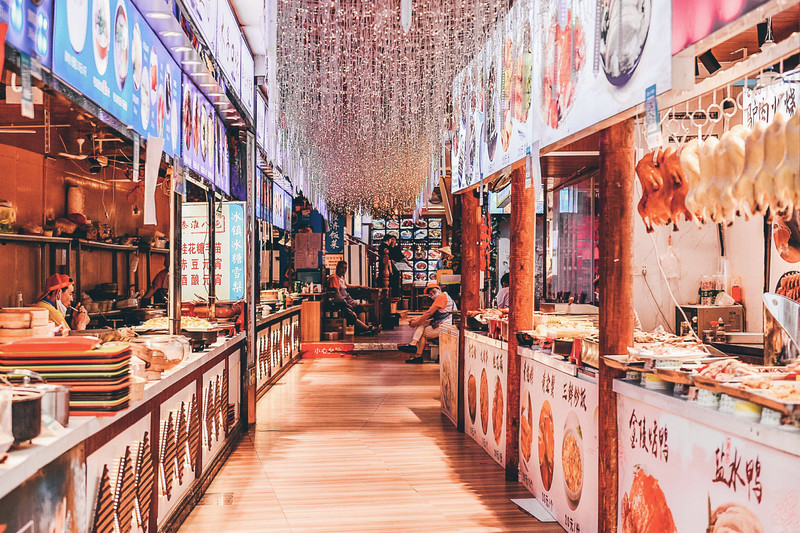
Strolling along the Qinhuai River, you will come up with many ancient poems,"Smoke cage cold water cage sand cage, Qinhuai near the restaurant at night";"Wild grass and flowers beside the Zhuque Bridge, and the sunset at the entrance of Wuyi Alley"; in the Qinhuai River, there are many beautiful and blue-hearted women and elegant literati who have left countless legends here. The Qinhuai River is probably a dream in Jinling!




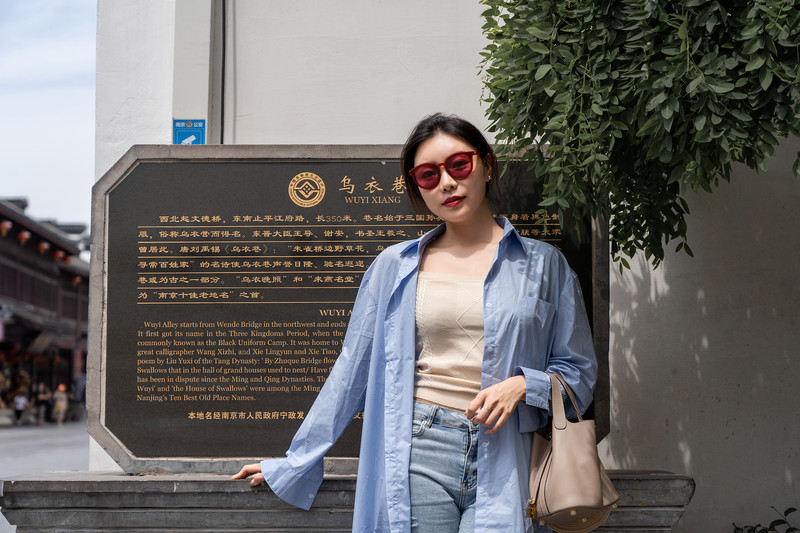
Nanjing is definitely a city worth visiting all year round. Zhu Ziqing said: "Visiting Nanjing is like visiting an antique shop." You can see the colorful projection of the times everywhere, the glory of Wang Xie, the romance of Jiang Song, and the modernity.




The Confucius Temple at night has a more golden filter than during the day. The Qinhuai River witnesses the prosperity of merchants in ancient and modern times.



You can buy a ferry ticket, tour Qinhuai at night, sit on a pleasure boat, and admire the ten-mile bead curtains.


There will be broadcasts to introduce the former residences of celebrities on both sides of the Qinhuai River, and strange stories. You can imagine that the places here were once full of lights and wine... On the banks of the Qinhuai River, there is a lingering Jiangnan.


At night, when the lights are first on, stroll along the Qinhuai River, cruise ships draw layers of water waves to watch the Confucius Temple's boiling life. Merchants on the pedestrian street are hawking special snacks and blowing the gentle evening breeze, making it feel comfortable and beautiful.



Sun Yat-sen Mausoleum in Zijin Mountain
In the early summer of the breezy breeze, stroll among the green mountains and clear waters of Zijin Mountain, walk hand in hand with family, lovers and friends, feel the gentle mountain breeze and the dark fragrance, and experience the romance and beauty of Zijin Mountain.

Sun Yat-sen Mausoleum is located at the southern foot of Zijin Mountain in Xuanwu District, Nanjing City. It is the home of Sun Yat-sen, the pioneer of the democratic revolution. The building follows the traditional axisymmetric form, with blue and white colors, making it more solemn and solemn against the backdrop of the mountains and forests. The half-moon-shaped Bo 'ai Square runs up the steps along the square and faces an antique stone archway with four pillars and three doors, called Bo' ai Square.

On the banner in the middle is the word "fraternity" written by Mr. Sun himself, which comes from the sentence "fraternity is benevolence" in Han Yu's "Yuan Dao". Mr. Sun has devoted his life to China's bourgeois revolution and fought endlessly for the nation's independence and freedom."fraternity" is the best reflection of Mr. Sun's great revolutionary spirit.

Passing through Bo 'ai Fang and walking up the cemetery road, you will lead to Lingqian Square. This road is open and well-planned. On both sides of the tomb path, pairs of opposite cedars, cypresses, ginkgo and red maples replaced the stone figures and stone beasts in front of the Shinto in ancient imperial tombs, better reflecting Mr. Sun Yat-sen's noble character and integrity.
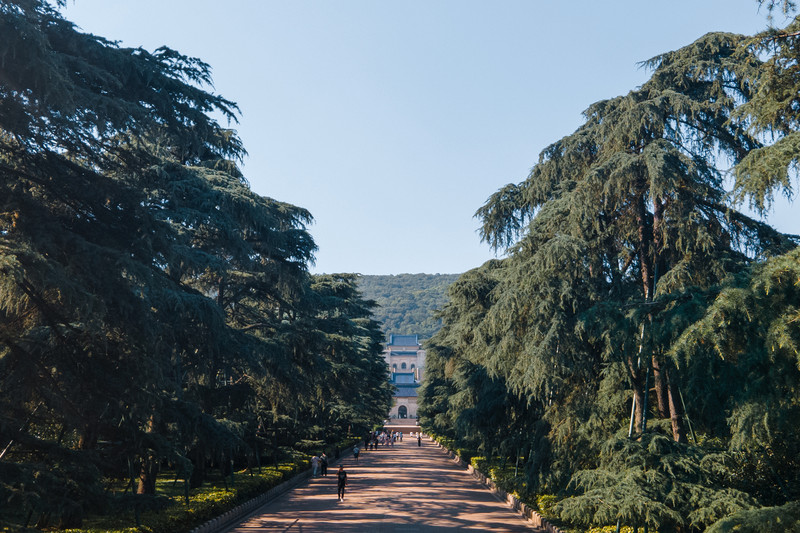


In front of the Sun Yat-sen Mausoleum is lined with Pingchuan River, backed by green peaks, Linggu Temple in the east, and Mingxiao Mausoleum in the west. The entire building complex is built according to the mountain.
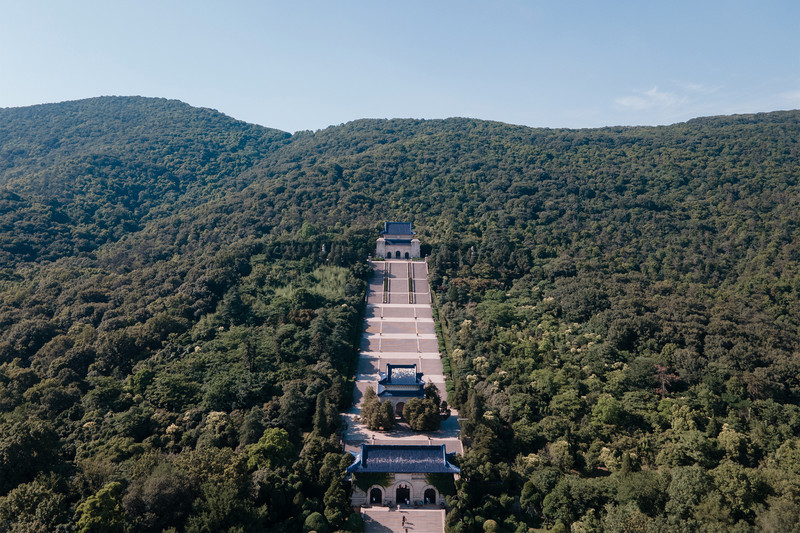

It gradually rises from south to north along the central axis. The tomb buildings are symmetrically arranged on the gentle slope at the southern foot of Zhongmao Mountain according to the north-south central axis. Looking down from the sky, Sun Yat-sen Mausoleum is like a reclining "freedom bell", which can be said to blend the essence of ancient Chinese and Western architecture, solemn and simple, and innovative.

Standing here, I can't help but think of a sentence in Chen Yunhe's poem "Sun Yat-sen Mausoleum":
"My life is a standing Sun Yat-sen Mausoleum, and I have the honor to reach the end of your life."
I feel honored to be here.
Yuhuatai Martyrs Memorial Hall
Yuhuatai is a beautiful hill surrounded by pines and cypresses, consisting of two closely interdependent hills. Yuhuatai was also the place where martyrs of the new democratic revolution were martyred. As many as 100,000 Communists and revolutionary people were killed here.

Walking to the front of the memorial hall, the sign "Sun and Moon Shines Together" is embedded on both sides of the north and south, which symbolizes the coexistence of the martyr's spirit with heaven and earth and shines with the sun and moon. Directly below the sign is the name of the "Yuhua Martyrs Memorial Hall" written by Deng Xiaoping.
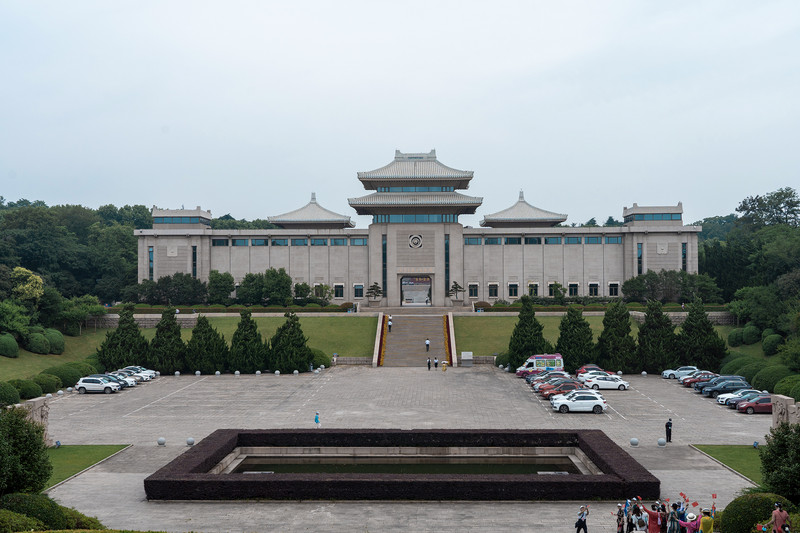

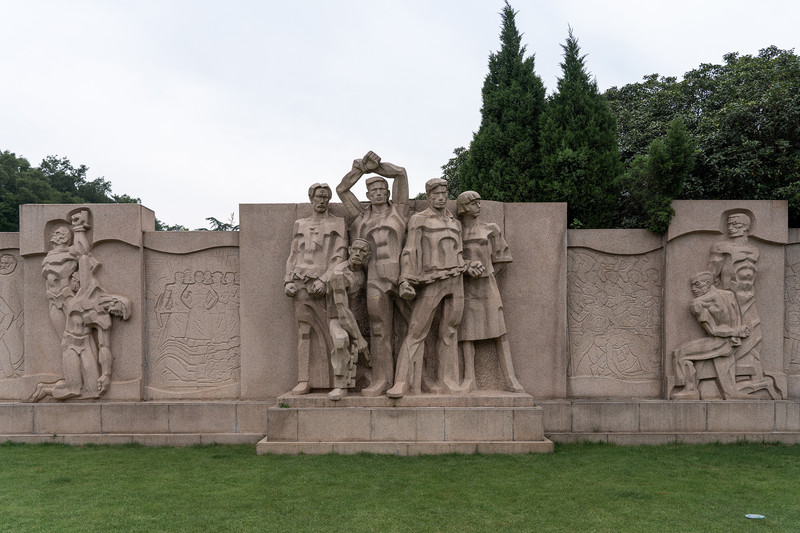
In the "Power of Faith-Exhibition on the Life Stories of Yuhua Heroes", the previous edition displays the life stories of 179 Yuhua Heroes, highlighting their lofty ideals and beliefs, noble moral sentiments, and fearless spirit of sacrifice for the people. This Yuhua heroic spirit, which deserves to be remembered forever, vividly interprets the original intention and mission of the Chinese Communists.
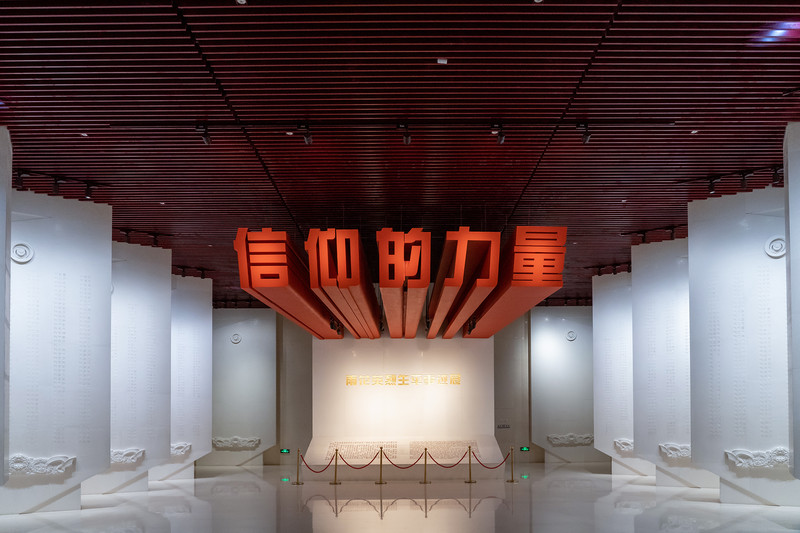


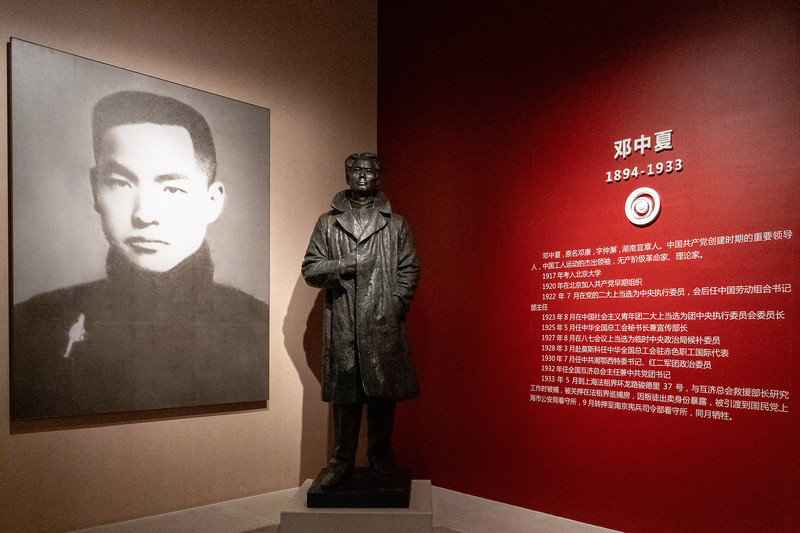







Remembering the martyrs and inspiring future generations. After leaving the memorial hall and walking in the beautiful Yuhuatai Scenic Area, the environment of evergreen pines and cypresses is comfortable and quiet, making people feel more moved and cherish the hard-won happy life.



Nanjing massacre
Early the next morning, we came to the Nanjing Massacre Memorial Hall. This was the first time I came here. I felt extremely heavy, remembering the innocent victims of the Nanjing Massacre and all the compatriots who were killed by the Japanese invaders.



The history of fellow human beings being mutilated is a long and sad story. If there are varying degrees of atrocities in these horrific stories, few catastrophes can compare in magnitude and scope to the Nanjing atrocities during World War II.

Over the past 84 years, we have not dared to forget the sufferings and blood and tears of the past, and we must not forget them.


As time goes by and the survivors pass away, there will be less and less truth that can be restored. In order to save this historical memory, many people are racing against time.



Since 1960, my country has begun to count the survivors of the Nanjing Massacre, when the registered number of survivors was 2592; in 1984, Nanjing City conducted the first count of local Holocaust survivors, and there were still 1756 survivors at that time; in 1997, there were more than 1200 recorded survivors.
Whenever a survivor passes away, a light goes out on the photo light wall of the Nanjing Massacre Memorial Hall. So far, there are only 73 survivors left on the photo wall.

They work hard to live to tell that the irrefutable evidence of history is beyond doubt, to allow more people to speak together, to present the truth in more ways, and to allow more people to love and pursue peace with this memory.
There were many people from all over the country who came to visit the Nanjing Massacre, but the venue was very quiet. Everyone recalled the anti-human atrocities of the Nanjing Massacre with slow steps and tears rolling in their eyes.


"The history of the Nanjing Massacre is not the history of a city. Nanjing's mourning is the mourning of the people; Nanjing's pain is the pain of the nation."

84 years have passed by, and today's China is no longer being slaughtered or bullied. A vibrant China stands tall in the East, and the Chinese people are also marching forward along the path of socialism with Chinese characteristics with high spirits.
Looking back, we will sharpen our patriotic aspirations, keep in mind the mission of youth in memory, convey to the world the Chinese nation's attitude towards human rights and civilization, and express to the world our determination and responsibility to love and maintain peace.
Opposing war and cherishing peace are what people around the world need.
For young people who are far away from the pain of war today, what we can do is to remember the painful past and remind ourselves to be the first and forge ahead, and live up to their youth and the times.
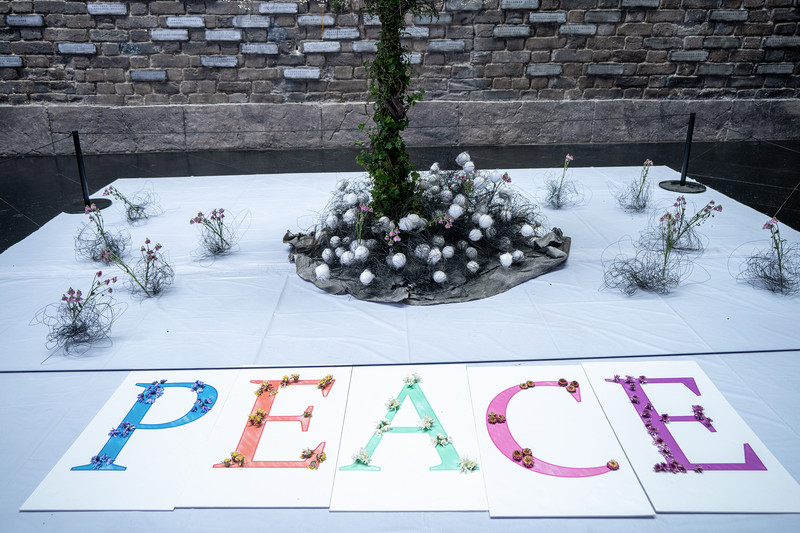
Always pray for peace. Never forget our ambition, and we are self-reliant!

Yangzhou
Continue north and come to Yangzhou. I like this warm city very much, and I have new surprises and gains every time I come. Yangzhou written by literati is always full of customs, even if it is a city gate, a teahouse, or a flower. Understand carefully, maybe the scenery is beside you.
"The world is three-part bright moon and night, and two-part rogue is Yangzhou." Yangzhou, an ancient land nourished by the Grand Canal, has a long history and is full of cultural heritage.
In the ancient city of Guangling in Yangzhou, there is a narrow alley called "Anle Lane". The former residence of Zhu Ziqing, a famous modern essayist, educator and poet, is located in Courtyard No. 27 in this alley.

Yangzhou has outstanding people and many celebrities. The talented Zhu Ziqing came here to settle down with his parents since he was a child and claimed to be from Yangzhou. It was indeed this elegant and charming ancient city that nurtured him.
In Yangzhou's quiet Anle Lane, an elegant courtyard house in the Qing Dynasty is Zhu Ziqing's home. The courtyard is so small that it is difficult to plant lovely flowers and plants, but there is a flower bed with green bamboo. The bamboo is green and the people are upright. He is a generation of awe-inspiring literary giants.

The old-fashioned wooden tables and chairs are still there, and some old items that my husband once used are still there.


Walking into the interior of the former residence, it is all the atmosphere of Jiangnan. Whether it is a hanging wooden door or a blue tile roof, it is full of charm and makes people feel like they are traveling through.
While reading, I have browsed Mr. Zhu Ziqing's work "Spring" for its vitality, the melancholy and melancholy of "Hurry", the touching touch of "Back", the graceful lotus appearance of "Moonlight in the Lotus Pond" and the colorful color of "Qinhuai River in the Shadow of the Oaks". Therefore, when I came to Guangling District of Yangzhou City, I must come here to have a look.
In "I am from Yangzhou", Zhu Ziqing said that the relationship between my family and Yangzhou is probably as good as what the ancients said,"I was born in here, died in here, and I cried in here." This sentence was used on the plaque of Zhu Ziqing's former residence. Zhu Ziqing's former residence is a small courtyard house with traditional structure in Yangzhou where Zhu Ziqing's parents, children and Mr. Zhu lived for more than ten years before and after returning to Yangyang. After repairs, some relics used by Mr. Zhu during his lifetime have been preserved. Zhu Ziqing's former residence was originally a typical residential "Sanjiao" building in Yangzhou and is the most well-preserved Zhu's former residence in the country. Brick walls and fine tiles, carved screens and doors, have an elegant look and are worth seeing.
You can see many knickknacks in the house, all of which were used by the gentleman during his lifetime, including bookcases. There are many documents on the bookcases, all of which have historical accumulation. There are also pipes in the house, and of course, there are also the four treasures of the study used by the gentleman. Seeing these things, I really feel like I miss you, as if the gentleman is sitting at the table using these things, constantly writing, leaving us with a "back". These cultural relics are all well preserved and have become precious national-level protected cultural relics today. It is very touching to have the honor to see them.
Upon closer inspection, I found that there were still many small objects on the table, including sitting clocks, vases, candlesticks, as well as stone screens and Guanyin, some ornaments with Yangzhou charm, which symbolized "lifelong peace."
Arriving at the east wing, what is displayed here are the items used by Mr. Zhu Ziqing's parents and two daughters during their lifetime. What attracts me the most here is the two photos hanging on the wall. One of them shows the gentleman's mother, with a kind face and elegance; the other shows the father, which turns out to be the father depicted by the gentleman in "Back".


In the west wing, this was once the bedroom of my husband's concubine's mother, and was later used as Runer's study room. It was Runer mentioned by Mr. in "Moonlight on the Lotus Pond".

Then we came to the second house, where we had an orderly hall and exhibition hall. If you want to learn more about Mr. Zhu Ziqing, coming here is definitely the best choice. In the center of the preface hall stands a statue of Mr. Zhu Ziqing. The details are well handled, making us feel as if we had really met Mr. Zhu. On the left side of the statue is a brief introduction to Mr. Zhu Ziqing's life story, which allows you to better understand Mr. Zhu Ziqing's life.

Hurrying through Yangzhou's "Former Residence of Zhu Ziqing", a small house in the south of the Yangtze River, a rich mine of boundless literature. I truly feel the atmosphere of a generation of literary masters,

Mr. Zhu Ziqing was worried about the country and the people all his life. He witnessed with his own eyes the broken mountains and rivers of old China and the people's livelihood. He angrily turned his pen from "for life" to "for the people." A scholar became a fighter for democracy and "would rather starve to death than receive relief food from the United States", demonstrating the precious integrity and noble sentiments of a scholar. Mr. Zhu Ziqing's works have accumulated over the years and increasingly show their fresh and simple power, their responsible responsibility, their moral demeanor and the light of moral writing.




Gaoyou
When you come to Yangzhou, if you have enough time, you may wish to visit the surrounding historical city of Gaoyou. The county town is not big, but it has a status in history that is important.
Gaoyou was named Gaoyou because Ying Zheng, the king of Qin, built a high platform and set up a postal pavilion here in 223 BC. In addition to its profound history and culture, Gaoyou also played a very important role and status in the modern history of the War of Resistance. Let's first preserve the very famous former site where the Japanese invaders surrendered to the New Fourth Army.


The story starts from the year of the victory of the Anti-Japanese War. On August 15, 1945, the Japanese imperialists announced unconditional surrender and signed the surrender document on September 2. However, the Japanese and puppet troops stationed in Gaoyou, Shaobo and other places refused to surrender. After that, a World War I broke out between China and Japan-the Battle of Gaoyou, which was called the "last battle" of China's Anti-Japanese War. Today, everyone comes to the Last Battle Memorial Hall to relive this history.
Walking into the exhibition hall, the turbulent and turbulent situation of 1945 unfolded before our eyes.

In the memorial hall, we reviewed all aspects of the final battle of the Anti-Japanese War, with telegrams giving instructions and scenes depicting battle scenes, as if the historic scene was truly displayed in front of us, and everyone present was moved.


At that time, there were more than 1100 Japanese troops stationed in Gaoyou City and more than 5000 puppet troops. As the scale of the Kuomintang army's attacks on the Jiefang District expanded, the Japanese and puppet troops in Gaoyou City became more rampant. Not only did they refuse to surrender to the New Fourth Army, but they also threatened to cooperate with the Kuomintang army in attacking the New Fourth Army in a rampant manner. In order to implement the order of the Party Central Committee to "resolutely, thoroughly and cleanly eliminate all enemies who dare to resist", Su Yu, then commander of the Central China Field Army, and Zhang Dingcheng, Deng Zihui, Tan Zhenlin and others jointly called the Central Military Commission to launch the Gaoyou Campaign.


At that time, Commander Su Yu asked the troops attacking the East Gate to fill soil in sacks in the open area in the east and pile it into a "half-moon-shaped fortifications" as high as the city wall. In this way, they could form a flat shot with the enemy on the city wall and reduce combat casualties. The troops that attacked the north and south gates opened up dense civilian houses and moved around in the houses of ordinary people. These all reflected Commander Su Yu's strategic wisdom and his broad love of soldiers as a son.

Our army's strategic wisdom is also reflected in the use of psychological tactics. After the outer strongholds of Gaoyou were cleared, the New Fourth Army actively prepared to attack the city, while vigorously launching political offensives. It used microphones to shout, hung slogans to persuade surrender, played Japanese songs, and used kites and mortars to distribute leaflets. In particular, dozens of comrades from the Ministry of Industry, the "Japan Anti-War Alliance", and the "Korean Independence Alliance" came to the front line to persuade surrender in Japanese, and loudly read out the imperial edict of Japan to surrender. Playing "Hometown Song" that Japanese soldiers are very familiar with... in many ways to shake the morale of the army.
Two days after the broadcast, two Japanese soldiers secretly surrendered to the New Fourth Army in the name of going out of the city to build barbed wire. They also brought news: The Japanese army was in great chaos, and soldiers and some officers believed that it was meaningless to shed more blood, but some commanders still had to carry out orders from their superiors and not surrender to the New Fourth Army.
At this moment, Su Yu decided to launch a general attack on Gaoyou City. The final battle of the Anti-Japanese War achieved a comprehensive victory!
The Memorial Hall of the Last Battle of the Anti-Japanese War recreated the scene of surrender with wax figures in its location.

At 4 a.m. on December 26, out of the principle of reciprocity, Han Nianlong, director of the Political Department of the Eighth Column, presided over the surrender ceremony on behalf of the New Fourth Army. At that time, Commander Su Yu and his entourage were among the soldiers of the New Fourth Army and watched the entire surrender process from beginning to end.
Under the dim lantern, the highest official of the Japanese army stationed in the postal service, Taishou Iwasaki, handed over a stack of Japanese army registers, ordnance, and quartermaster registers respectfully to Director Han Nianlong.
History cannot be forgotten, and revolution needs to be permanent. The scenes and rows of souvenirs in the memorial hall make the history that has been silent in the years seem new and extremely clear. The war of war at that time created today's stable and prosperous world. The Gaoyou People's Liberation Army contributed its strength in the final battle of the Anti-Japanese War, drawing a perfect end to the world's anti-fascist war.
Walking out of the exhibition hall, we came under the party flag, and looked at the heroic monument. Rows of neat names of martyrs were engraved on the wall. The sculpture in the middle vividly showed everyone the tragic war scenes during the Anti-Japanese War.





This visit to the Red Base made me more intuitively feel the fearless spirit of the Chinese Communist Party and soldiers in the face of danger when the destiny of the motherland was at stake. They sacrificed their lives to sweep blood only for the happiness of the people and the future of the country. In today's peaceful and prosperous times, war may be far away from us, but those red memories of history cannot be forgotten. Only by understanding this thrilling past can we feel the weight of martyrs 'lives and the decisive role of the party in the country. Heroes are remembered and engraved on stone tablets, and engraved in the hearts of generations.




Huaian| Exploring the Prime Minister's former residence, crabapple blossoms year after year
Three thousand miles of canal, Drunken beauty is Huai 'an! It seemed that overnight, Huai 'an suddenly became popular all over the country. On social media, the beautiful canal scenery makes people yearn for it. Huai 'an is born on water. Huai' an is peaceful and water is the soul of Huai 'an.
This is the second time I have come to Huai 'an and I like this small town from the bottom of my heart. Huai 'an brings together the gentleness of the south and the pride of the north to form an endless river that irrigates the land and people.
Huai 'an, located in the central and northern part of Jiangsu Province, is located in the Yangtze River Delta region, and is an important central city in northern Jiangsu.
Generations of rulers have dug canals in Huai 'an to facilitate water transport.
Huai 'an, located at the intersection of the ancient Huaihe River and the Beijing-Hangzhou Grand Canal, is known as the "Canal Capital of China". It has also nourished the Huaiyi customs of two thousand years ago and spawned generations of Huaishui children. "Water transport belt and throat","thoroughfare of nine provinces","the intersection of Nanchuan and Beima"... Water transport culture, river engineering culture, and Jianghuai culture meet here.
Huai 'an fully witnesses the history of the Chinese Grand Canal through the three sections of Hangou, the Sui and Tang Dynasties Grand Canal, and the Beijing-Hangzhou Grand Canal. The Huai 'an section of the Grand Canal of China has been included in the World Heritage List. This low-key town located at the intersection of the ancient Huaihe River and the Beijing-Hangzhou Grand Canal has finally ushered in the long-awaited moment of glory.
To the world, Huai 'an has the glory of the throat of a canal. To China, it has a more affectionate meaning. Huai' an is the hometown of the great man Premier Zhou.
Zhou Enlai's former residence was the place where Premier Zhou lived before he was 12 years old. In 1988, it was announced by the State Council as a "National Key Cultural Relics Protection Unit". In October 2015, it was officially approved as a national 5A-level tourist attraction. A large number of tourists come to visit Premier Zhou's Memorial Hall every day. It is said that primary and secondary school students in Huaian City often organize regular study visits to understand the original intention of great people to join the revolution.

The clouds are white beside the Zhenhuai Tower, and the sun is slanting in front of the son-in-law alley. Zhou Enlai's former residence is located in Fuma Lane, Huaian District, Huaian City. On the north side of the lane, there are 32 houses of large and small sizes. It is a typical residential building in northern Jiangsu. Blue bricks, gray tiles and wooden structures form two houses connected from east to west. Each house is a winding three-entrance courtyard.




Walking into the main entrance of the former residence, the first thing that comes into view is the place where Zhou Enlai studied as a child. Across a waist door westward from the reading room are the three houses in Miannan where Zhou Enlai's parents lived. On March 5, 1898, Zhou Enlai was born in a house in the east. There are two 20-meter-high century-old elms in the courtyard of the former residence. They were planted by Premier Zhou himself in his childhood and are still tall and strong today.



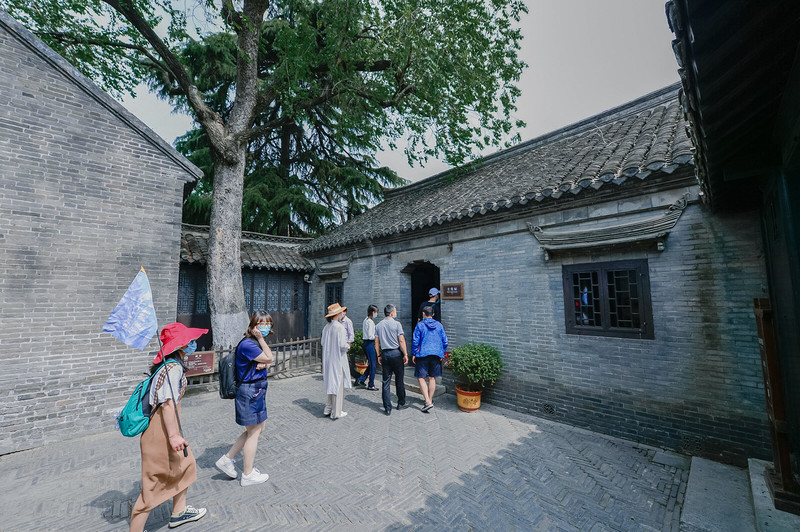
Under the guidance of the tour guide, I learned that family changes in my childhood made Zhou Enlai mature earlier than his peers. Early education allowed him to know books and etiquette, and his excellent family tradition had a profound impact on his outlook on life and the world.

In Zhou Enlai's childhood, four women had an important influence on his growth. Her biological mother, Wan, was born in an official family and the daughter of the Huaiyin County Magistrate. She is kind, has a cheerful personality, and has good family education. During her lifetime, she was smart and capable in handling matters and had a strong ability to resolve difficulties. When she came forward to mediate family disputes, she often took Zhou Enlai with her. This had an important impact on Zhou Enlai's basic etiquette, human relations, upholding justice, conducting housework, being conscientious and meticulous, and forming his outlook on life in his childhood.
The adoptive mother, Chen, was educated, knowledgeable, and fond of tranquility. She provided Zhou Enlai with cultural enlightenment early and often told him stories, such as the stories in "Tian Yu Hua" and "Zaisheng", taught him to read words and learn culture, and also sent him to a private school to study, so Zhou Enlai could read the novels "Journey to the West","Water Margin" and "Dream of the Red Chamber" from the age of 8. Zhou Enlai learned a cheerful character from his biological mother and a quiet character from his adoptive mother.
The wet nurse, Jiang, was a poor farmer. After Zhou Enlai was born, she went to the Zhou family to work as Zhou Enlai's wet nurse. She worked in the Zhou family until Zhou Enlai left Huai 'an for Northeast China. When he was a child, Zhou Enlai often followed Jiang's mother and watched her work. Jiang's mother also taught him various farm work and plant knowledge, and also took him to his hometown to play with his children. The young Zhou Enlai learned about farming and the hard life of farmers, and developed a hard-working and frugal lifestyle from then on.
There was also another eighth aunt, Yang Yang, who became Zhou Enlai's actual caregiver after his biological mother passed away. She also had a great influence on Zhou Enlai, and Zhou Enlai also had deep feelings for his eighth aunt.
The four women's influence on Zhou Enlai was multi-faceted, from the formation of basic living abilities, life experience, outlook on life, the cultivation of character, and their views on society.
Zhou Enlai was determined to study "for the rise of China" when he was in primary school. When he graduated from Nankai School, he exchanged messages with his classmates saying "I am willing to meet when China takes off in the world." He went to study in Japan and returned to China to participate in the May 4th Movement. He then went to Europe to work and study and returned to China to join the revolution... he has been fighting for the rise of China. The boy set his original intention and then worked hard for it all his life. Zhou Enlai's firm ideals and beliefs and persistent pursuit of life will always be a model for us to learn from.



The demeanor of a great man lasts forever. In the hearts of Huai 'an people, Premier Zhou Enlai has never gone far. His spiritual inspiration has led generations of Huai' an people to strengthen their beliefs, forge ahead, forge ahead through difficulties, and forge ahead. It is Huai 'an's most precious spiritual wealth.
What moved me was the Deng Yingchao Memorial Hall, which displayed many photos and letters of the two people living together. The light, shadow and text recorded the two people's youth and achievements in joining the revolution together, and also portrayed the great friendship of caring for each other with sincerity throughout their lives.

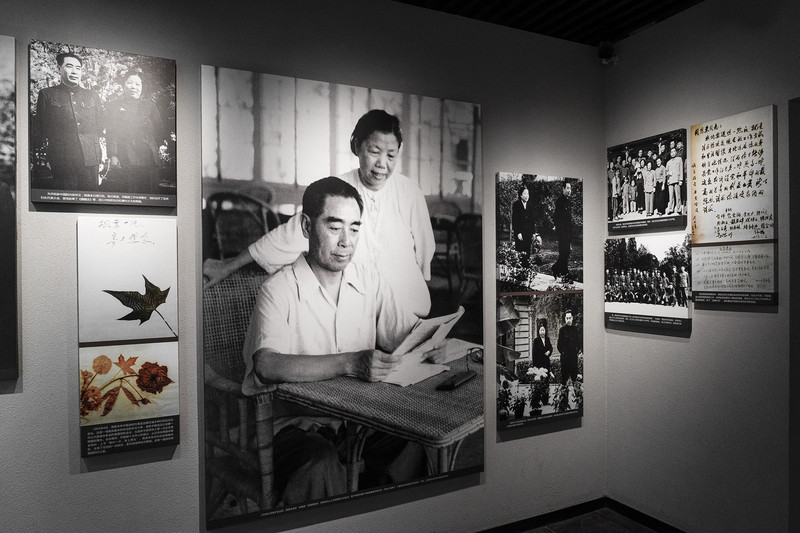
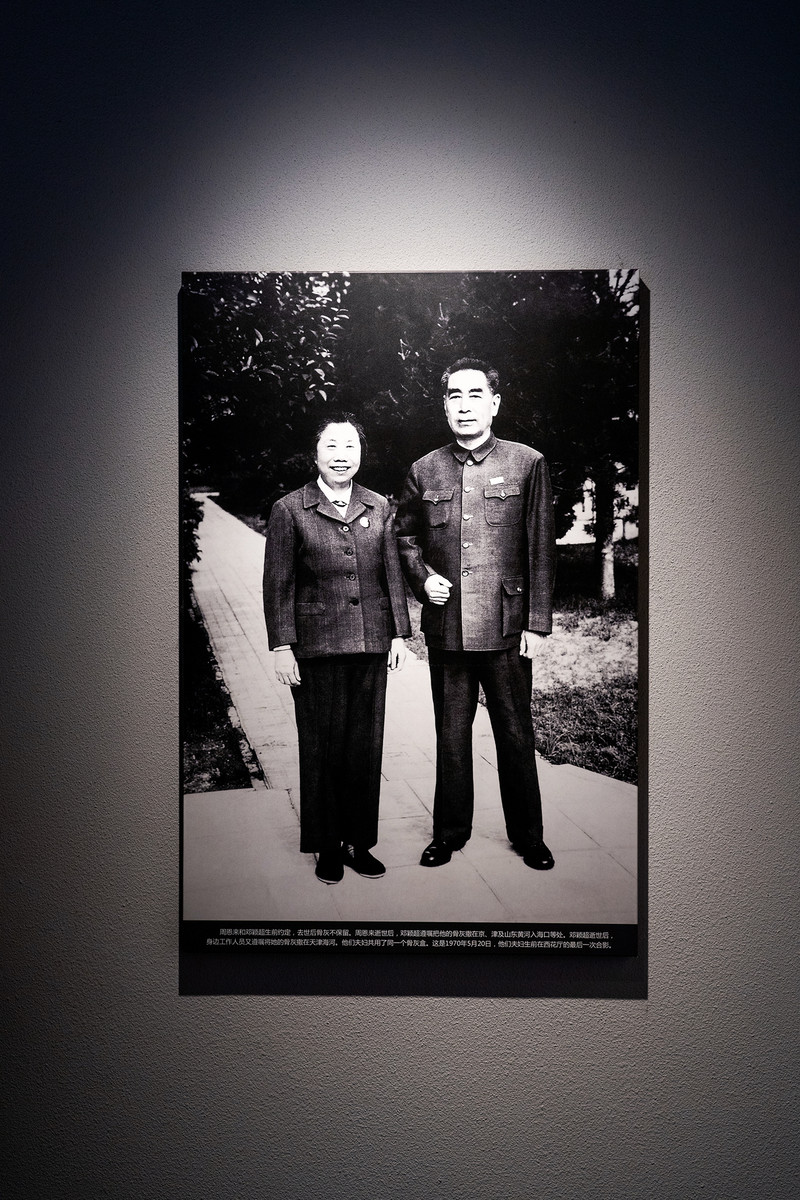
The most memorable thing is an article at the last exit of the exhibition hall. It was originally a posthumous work by Deng Yingchao in 1997,"Remembering from the Begonia Flowers in Xihua Hall." She wrote affectionately in this article: "You are gone, but every time the crabapple flowers bloom, people who love flowers often come to see the flowers. Before the flowers fell under the tree, everyone appreciated the flowers while remembering and missing you as if you were still among us. You leave this courtyard, leave them, leave us, and you will not come again. Where have you been..."

With a great achievement in mind, it is a century-old glory. Taking advantage of early summer, it is better to go to Huai 'an to experience the city's treasures left by the long years and experience the brilliance of the century-old red road!
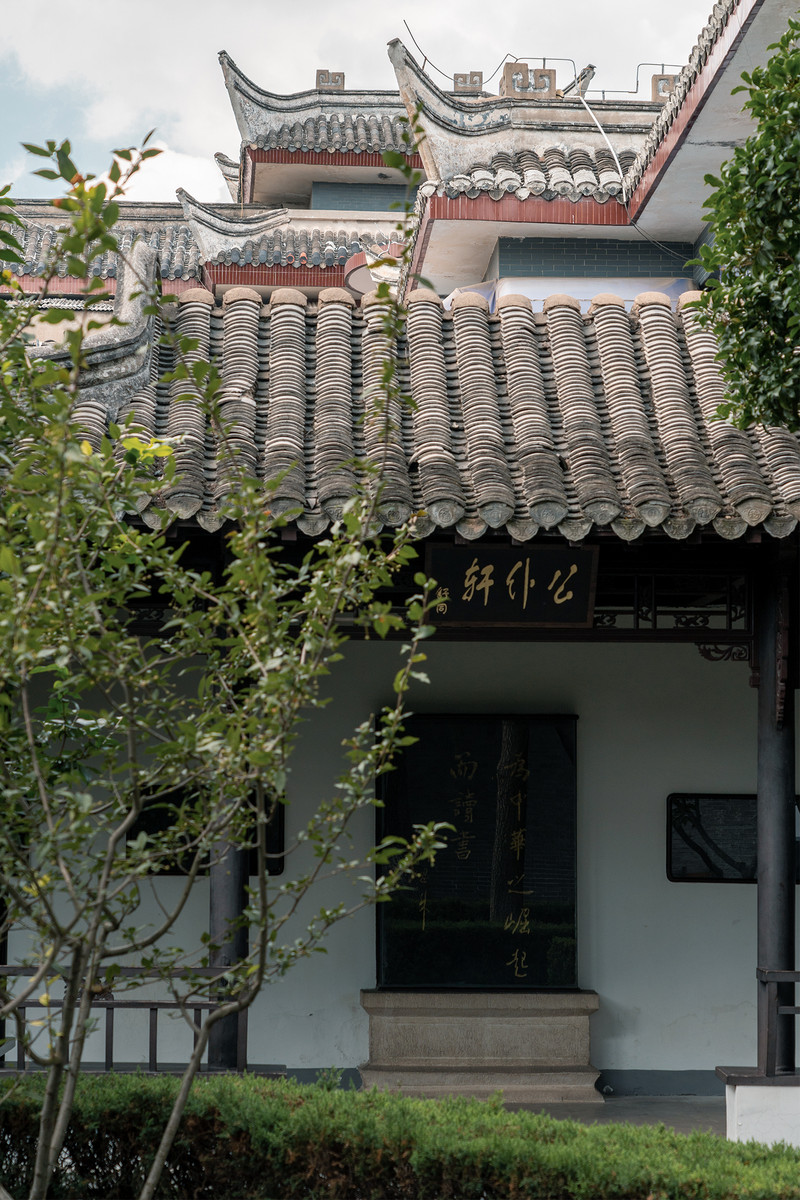
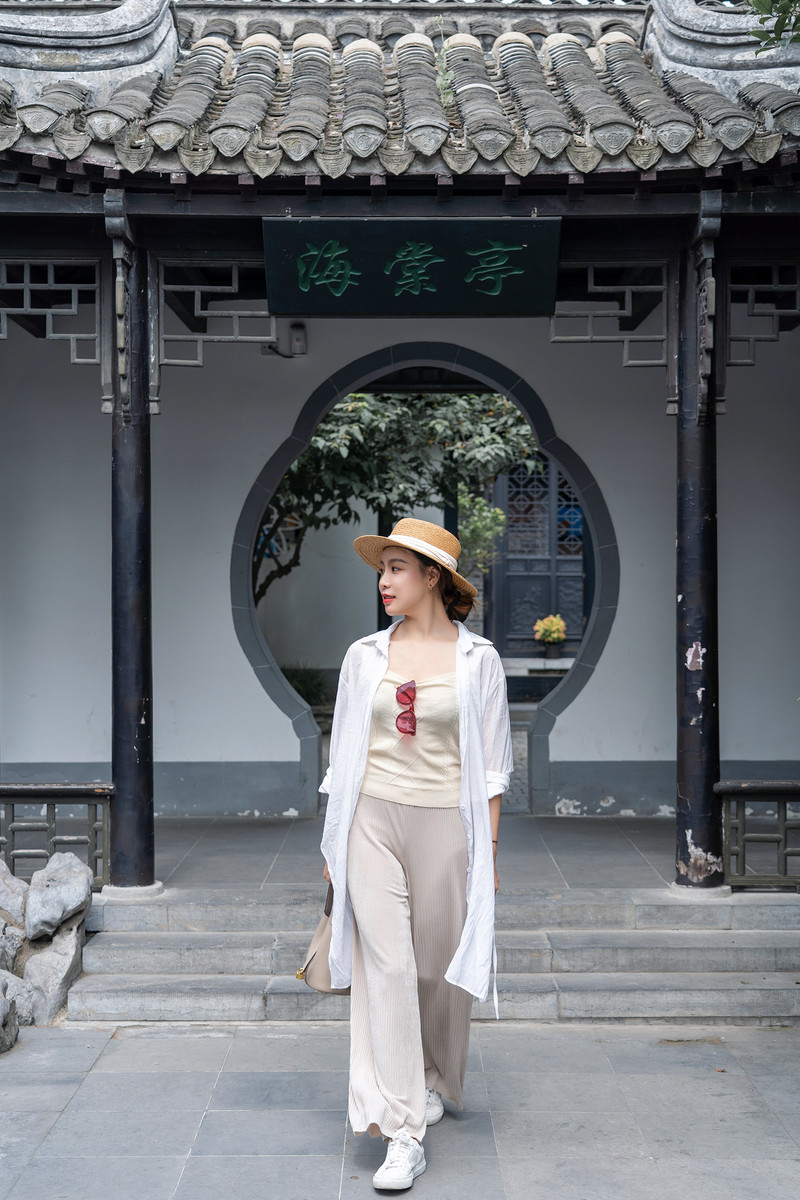

Jiangsu has cities full of scenery, and cities worth reading carefully!
The charm of water in Jiangsu lies in its charm and its character! It hides the taste of the world, but also tenacity and passion.
With a great achievement in mind, it is a century-old glory. The red journey in Jiangsu inspires us to cherish time, move forward courageously, and let the red spirit be passed down from generation to generation.
Previous Article:Yangzhou's 3-day tour 丨 takes you to get to know the beautiful Huaizuo Famous Capital!
Next Article:Go hiking, admire flowers, taste delicious food, and wander in the most beautiful March spring in Jiangnan.
